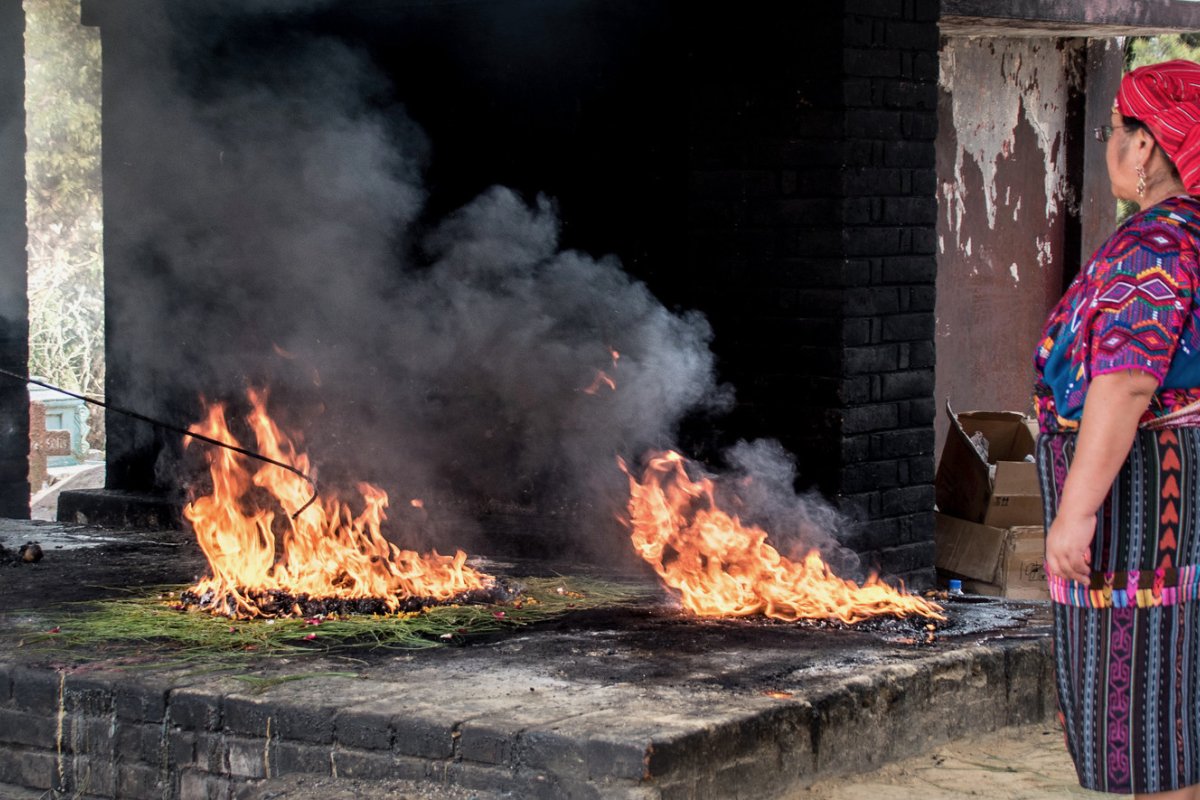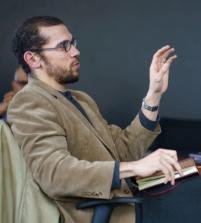Popol Vuh Someone Has Once Again Began to Play Over Our Heads

Loss and Continuation: Lessons from the Popol Vuh
An ancient Maya tradition on keeping those we've lost alive
By Alexus McLeod June 10, 2021
Over 600,000 people in the United States alone have died of Covid-xix over the final year and a half. Some experts believe the actual number is closer to 900,000 in the U.s.. Over iii.5 million people (also certainly a vast undercount) have died worldwide. This is of class in improver to all the other things that accept taken people away over this period. The pain and loss felt past so many individuals and families—children, parents, siblings, friends—is immeasurable.
But the world carries on, things start anew, our past fades and dies. Or and so we oftentimes retrieve. Just how can those who take experienced such devastating loss go on? How practise we walk into the hereafter with those we loved silenced forever? Such loss can feel like a slice of oneself has been torn abroad and destroyed. While we might get dorsum to the office, return to sporting events and restaurants, and proceed the economy going strong once again, our loss remains.
The traditional thought of the Maya (of current day Republic of guatemala, Belize and southeastern Mexico) has much to teach u.s. almost dealing with this loss, by ensuring that our loved ones are ultimately not lost. Each of usa is characterized by our essence, the core of what it is to be united states. This essence is non manifest just through a sure torso or features. Those are things that modify even through one's lifetime. One'southward essence is more than fundamental than this, but information technology is manifest through 1's characteristics, mental and physical. One's essence, according to the Maya view, is non static or stuck within the bounds of the item biological individual. Information technology can be manifest in many places and many ways. When we construct a piece of work of art or a text, for example, this manifests something of our essence. When nosotros have children, or teach others, some of our essence is manifest in our children or students.
In the Chiliad'iche' Maya text Popol Vuh, we find many examples of continuation of essence, particularly of the manifestation of ancestors in the acts and lives of their descendants. Early in the text, the twins One Hunahpu and Seven Hunahpu[one] are called to the underworld, Xibalba, considering the lords of Xibalba are angered past their joyous playing of a ritual abortion above their heads, in mockery of the lords of the underworld. All of this is clearly symbolic of our lives—in the strivings and activity of humanity, we continually resist and spite death, until finally death catches up to us and requires our sacrifice. The twins cannot escape their ultimate fate, as indeed none of us tin, and meet their terminate in Xibalba. As the twins fix to descend to Xibalba, where information technology is articulate what will happen to them, their mother is distraught and in tears. The twins, trying to panel her, say: "nosotros must get, only we will not die. Do not grieve." This is not but a noble lie to at-home their female parent, just expresses a deeper truth.
Though the twins ultimately do perish in Xibalba—they are killed, and Ane Hunahpu'due south caput is removed and placed in a calabash tree—they also do not die, because their essence is continued through their sons, the central hero twins Hunahpu and Xbalanque, born from a woman of Xibalba impregnated by receiving spittle from the caput of I Hunahpu in the calabash tree. The head of I Hunahpu explains to the adult female he impregnates the crucial bulletin that the myth aims to limited:
"My saliva, my spittle, is just a sign that I accept given to you. This head of mine no longer functions, for it is but a skull that cannot work. The head of a truly groovy lord has expert mankind upon his face. But when he dies, the people get frightened considering of his bones. In like manner, his son is like his saliva, his spittle. He is his essence. If his son becomes a lord, or a sage, or a main of voice communication, then nil will accept been lost. He volition continue, and one time more than go consummate. The face of the lord will not be extinguished nor will information technology exist ruined. The warrior, the sage, the principal of speech will remain in the grade of his daughters and his sons."
The Popol Vuh teaches us that our lost loved ones, the ancestors, descendants, and those who accept touched u.s. are always potentially within us. They are not just in that location in a causal sense, nor practise they manifest all the time. Nosotros frequently say that we conduct with us those who had impact on our lives. But the Maya view goes beyond this. The essence of a person or a matter must exist activated. All of u.s.a. have the potential to manifest those whose essence touched and created effects on our ain, but we do not always actualize this potential. Information technology can be wasted, ignored, buried abroad, forgotten. We tin can permit our loved ones disappear. When we forget them and go dorsum nearly our lives as if they'd never been, we permit them disappear—or rather, don't recognize and fully manifest the style in which they are always nowadays.
Who were they? Who are we? Who are we if not them, those we have lost? So how can we better reflect them, make them alive again, manifest them, allow them to truly live again? It takes piece of work—learning, memory, and practice. Commitment. Nosotros have to put aside time for it, for them. This takes away time for u.s.. It involves cede (another important virtue in Maya idea). This is something stressed by the Popol Vuh besides: We practise not go on essences alive for free. We must constantly reverberate and marshal ourselves, strive to follow the mode of those we have lost, to ensure their essences remain active. The fact of biological relatedness alone, for instance, is bereft to manifest the essence of others. Nor is biological relatedness necessary—our lives can exist touched and molded past people who are not biologically related to usa as much as they tin can be by ancestors. The continuity of essence but happens through effort, as One Hunahpu explains. It is a projection. We ofttimes find the features or actions of ancestors revealed in our own. We or someone close to u.s. might recognize a item gesture or behavior of ours every bit identical to that of a long gone ancestor. This is the seed of essence, but non yet fully essence. We must integrate such a feature into a coherent project, performing it in a socially attainable manner. We thus get to the world and the community, at to the lowest degree for some time, what this ancestor was. The commanding tone of voice one inherits from an antecedent who was an orator, for example, does non in itself manifest this ancestor. But when one employs this voice to inspire the community as their ancestor did, and then the ancestor'southward voice returns, the ancestor's essence is manifest in one case again.
When we act, we don't act just for ourselves; we stand for all those who framed and shaped us—our ancestors, friends, teachers, those who made united states of america what we are. Our responsibility to them is not merely a kind of stodgy obligation, only also a style to literally continue them live. We ourselves concur the ability to ensure that no virus, accident, or illness can accept them abroad. Insofar as we tin can fulfill this responsibleness, our loved ones volition non be lost, extinguished, or ruined. They will continue.
[1] The numbers one and 7 signify origins, and we find a number of characters in this text, dealing largely with creation, with names including these numbers.
Photo: Maya sacrifice to the gods in the cemetery of Chichicastenango, Guatemala (Ralf Steinberger).
Sightings is edited by Daniel Owings, a PhD Candidate in Theology at the Divinity Schoolhouse. Sign up here to receiveSightingsvia e-mail. You can also follow us on Facebook and Twitter. The views and opinions expressed in this article are those of the writer and do non necessarily reverberate the position of the Marty Center or its editor.
Source: https://divinity.uchicago.edu/sightings/articles/loss-and-continuation-lessons-popol-vuh

0 Response to "Popol Vuh Someone Has Once Again Began to Play Over Our Heads"
Post a Comment